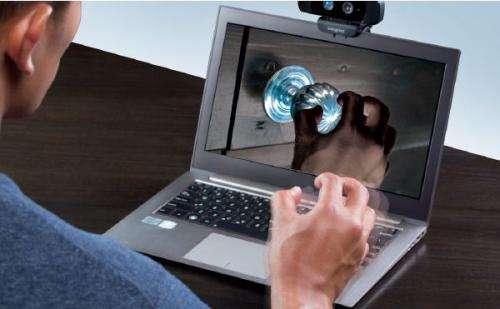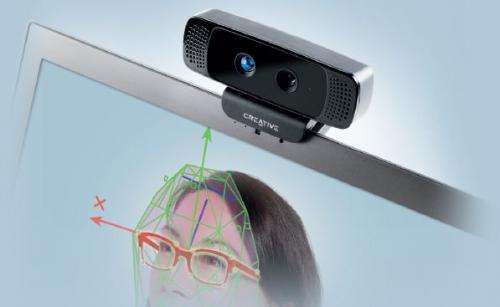(Phys.org)—Intel's new breed of Ultrabooks will be lighter, thinner but loaded with new features and functions that end users will either see as bloat or muscle, and Intel is counting on the latter. The look and functions of Intel's next-generation Intel Ultrabooks were revealed by Intel executives at the Intel Developer Forum. The new computers will bring in voice recognition, touch, finger tracking, augmented reality, and gesture-based interfaces. The technologies that generally are expected out of smartphones and tablets will be applied toward the thin and light computers. Ultrabook manufacturers will start to integrate sensors gyroscopes, accelerometers, GPS, NFC, and 3G and 4G-LTE connectivity.
A voice-recognition tool by Nuance called Dragon Assistant will start appearing in Dell ultrabooks later this year. A demo at the IDF featured a Dell XPS 13 Ultrabook running Nuance's Dragon Assistant Beta.
With next month's release of Windows 8 from Microsoft, 40 upcoming Ultrabooks based on Windows 8 will be touch-enabled.
Talk of the upcoming Ultrabooks at the IDF was laced with the key technology driver behind future innovation-loaded Ultrabooks, and that is Haswell, Intel's upcoming processor architecture. Intel fashioned Haswell with beefed-up Ultrabooks in mind. Haswell can allow for the Ultrabook's upcoming innovations, with a design that enables lower power requirements, power boosts, and more efficient energy management. Haswell's capabilities translate into Ultrabook capabilities. The Haswell design carries the same 22-nm process as Ivy Bridge, but will deliver better power management and battery life. Haswell processors will support Intel customers building a new crop of tablet-morphing form factors, where a flip or swivel or fold-back changes the laptop into a tablet. There are about 70 ultrabooks on the market at the moment. Next year, Intel is banking on doubling that number.
To prep developers, Intel announced this week that it will release an introductory software developer package, the Intel Perceptual Computing SDK 2013 Beta, in October. Developers will be able to add perceptual computing usage for immersive software applications that incorporate close-range tracking, speech recognition, facial analysis and 2-D/3-D object tracking on second and third generation core processor-powered Ultrabooks and PCs. This SDK supports the CREATIVE Interactive Gesture Camera Developer Kit, a USB-powered depth sensor camera tuned for short-range interactivity. This is for Intel-powered Ultrabooks, laptops or PCs used within a range of six inches to three feet. The camera developer kit, said Intel, will be available in Q4 of this year. Intel has also announced a Perceptual Computing Challenge with up to $1 million in awards and promotions for application developers.
More information: software.intel.com/en-us/vcsou … eptual-computing-sdk
© 2012 Phys.org

























